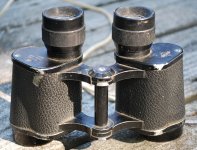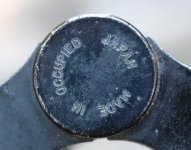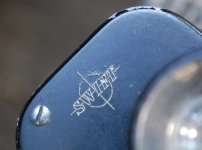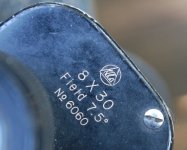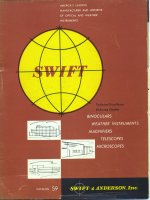henry link
Well-known member
I found this 8x30 IF binocular sitting on a shelf at a friend's vacation cabin. It was bought by her father long ago. The most primitive traits are uncoated optics and the "made in occupied Japan" label. The lettering inside the triangular logo appears to spell "kogo". I would guess this binocular was produced for the military during the war, then post-war simply put back into production unchanged for export.
I noticed Simon also has a very early Swift 7x50 in his collection, but that appears to be a little later production with "coated optics".
Unfortunately, the condition is terrible. Collimation is shot and there is a luxuriant garden of fungi growing inside.
I noticed Simon also has a very early Swift 7x50 in his collection, but that appears to be a little later production with "coated optics".
Unfortunately, the condition is terrible. Collimation is shot and there is a luxuriant garden of fungi growing inside.




